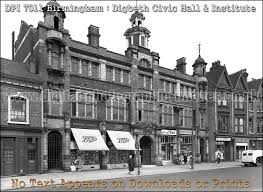Stephen Pennell looks over a photographic record of the coolest neighbourhood in Britain.
Digbeth, by Nigel Parker.
On the face of it, you’re on to a winner with a book of photographs of Digbeth. The area is dripping with character, drenched in history and teeming with life.
It throbs with heavy machinery in the daytime and booming basslines at night, and sometimes it’s the other way round. Only last week I was at Lab 11 in Trent Street between the hours of nine and twelve for a Thursday morning battle rap event, followed by a lunchtime game of pool in Subside (formerly The Dubliner) during which some of the bar staff got their chain mail and broadswords out and we interrupted our game to join in with a friendly English Civil War re-enactment. Bizarre anywhere else, par for the (Ghetto Golf) course in Digbeth.

The area is awash with social enterprises, churches, interesting architecture, ghost signs, and an incredibly diverse population. Well-heeled hipsters rub shoulders with hard-up homeless, and barefoot babbies with wild hair play in the courtyard of the ramshackle flats above the coach station… you get the picture.
Or rather, in this collection, you don’t. Lots of the photos aren’t even of Digbeth. The Bull Ring markets, Selfridges, Edgbaston Street and Moor Street Station are featured heavily and there’s a double-page panorama of Grand Central. The Digbeth shots are heavily focused on the coach station, the Custard Factory and a few Irish pubs on the high street, and don’t get me wrong – they are worthy of documentation. There’s one stunning study of a drinker outside The Kerryman who looks like he’s been there for decades and offers a chilling glimpse into my own own possible future.
But there’s not enough of the Staffordshire blue-brick railway arches, the industrial chic, the vibrant food scene or the varied nightlife. Where’s the fascinated throng following pied piper Carl Chinn around on the Peaky Blinders tour, the street food disciples at Digbeth Dining Club, or the late-night revellers leaving a big gig at the Institute? Lower Trinity Street is Broad Street minus the generic music and puke puddles, yet doesn’t appear anywhere in the book.
The Rainbow Venues (until their recent licensing problems) attracted coachloads of clubbers from far and wide, and the Night Owl is the only bespoke Northern Soul club in the country – both are conspicuous by their absence. And how in the name of all that’s holy did he miss the JFK memorial mosaic on the corner of Floodgate Street and the beautiful Italianate monastery further down?
To be fair, the photographer admits in the foreword that he is first and foremost an enthusiastic people-watcher and he has trained his lens on some interesting looking characters. To the layman the actual photography seems accomplished and well presented, but considering Digbeth has recently been hailed by the Sunday Times and Travel Supermarket as one of the UK’s coolest districts, this offering is a missed opportunity, and to a certain degree, a misrepresentation – it makes the area look dull.
Perhaps that’s a good thing. The last thing those of us who love Digbeth want is a load of rubberneckers enticed by an advertorial book to come down and gawp at the place, and maybe change its weird and wonderful character for the worse. I guess that what’s portrayed here is just not the Digbeth I know and love.
£18, The History Press


